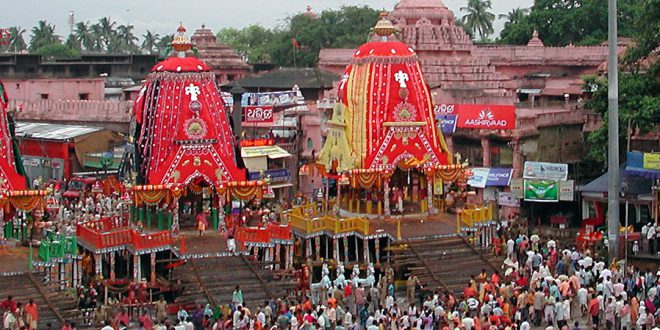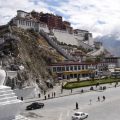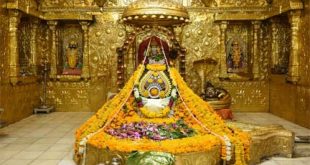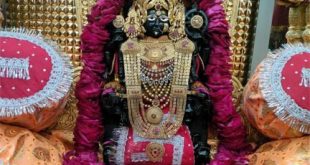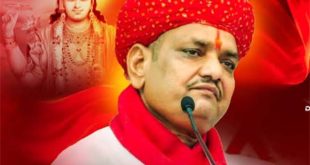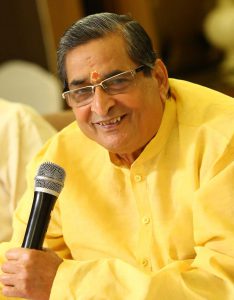 By R K SINHA
By R K SINHA
New Delhi
The Supreme Court of India in a recent observation asked the management of Shri Jagannath Temple to consider permitting people of other religions (non-Hindus) to enter the temple provided they abide by the practice and rituals of the temple. While this advice to the management of the temple is debatable let me first briefly tell the sanctity of Jagannath Mandir of Puri.
Religion is a matter of faith. In Kaliyug Lord Jagannath is incarnation of Bhagwan Shri Krishna. The legend has it that after the end of war of Kurukshetra in Mahabharat Bhagwan Shri Krishna abandoned the earth and returned to his abode as Lord Vishnu. Before leaving he left a wooden log (Daru) floating in the ocean. The then King of the region saw a dream in which he was directed to retrieve the floating log from the ocean and make icon of Lord Jagannath, his sister Subhadra and brother Balbhadra. Subhadra was sister of Lord Krishna and Balram was brother of the Lord in Dwapar.
Pag binu chal hin, Suna hin binu kana
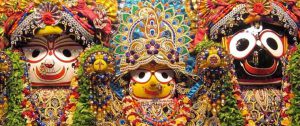
When you visit the sanctum sanctorum of the Puri Temple, you are simply awed to see the icons of Jagannath, Balbhadra and Subhadra, a triad. The icons have no hand or leg or ears. There is prayer that says:
“Pag binu chal hin
Suna hin binu kana
Kar binu Karma Karahin Vidhi Nana
Anand Rahit Shakal Rash Bhogi
Bin Vani Vakta Bad Yogi”
Roughly translated the verse means
O Lord
You walk without leg
You hear without ears
You do all kinds of work without hand
Without any desire of pleasure you enjoy everything
Without tongue you are great orator like a Yogi
At the temple the worship is incomplete unless the priest of the temple mildly hit you on the head with a bunch of sticks. Once the sticks touch your head you are blessed.
Supreme Court Says “Places of worship should be open to all people irrespective of their caste and religion.”
Christianity permits non-Christians to visit Church and stay even during prayers. A mosque is a place of prayer and not a place of worship. There non-Muslims can enter a mosque. Other faiths like Sikhism, Buddhism and Jainism allow people of other faiths to enter Buddha Temples, Jain Temples and Gurudwaras. In Jagannath Mandir of Puri, Buddhists, Jains and Sikhs are allowed to enter the temple since the three religions are off shoots of Hinduism.
There is one answer to the poser of Supreme Court’s observation that people of other faiths (Non-Hindus) should be allowed to enter Jagannath Mandir of Puri.
Rathyatra is on July 14
The deities – Lord Jagannath, Balaram and Subhadra are taken out of the temple every year during the Rath Yatra to bless devotees of different religions and lakhs of people also get to see them during the ‘Snan Ustav’ (bathing festival). This year the Rathyatra is on July 14.
Those who want to have ‘darshan’ of the deities can avail this occasion when caste or religion is no bar to see the deities.
The Shankaracharya of Govardhan Peeth Nischalanand Saraswati has this to say on Supreme Court’s view, “Entry to all into Sri Jagannath Mandir violates the age-old tradition of Sanatan religion, hence not acceptable to us”.
The Shankaracharya of Govardhan Peeth is the chief of Mukti Mandap, the top body of Pandits, inside Shri Jagannath Temple.
However, it is better that the management of Shri Jagannath Temple of Puri should evolve some code to regulate entry of people in the temple. The Supreme Court’s observations are like interim order. The Managing Committee of the Temple will take up the matter after the Rath Yatra Festivals this month.
Interestingly, some great persons were not allowed to enter the temple. It includes, Mahatma Gandhi, Indira Gandhi and Rabindranath Tagore among others.
In 1934, Mahatma Gandhi visited Puri and wanted to enter the temple along with some Christians, Muslims and Dalits. He was denied permission. Gandhi staged protest in Puri. Vinoba Bhave, the ‘bhoodan leader’ who had accompanied Gandhi was also refused entry.
Indira Gandhi the then Prime Minister was in Puri in 1884, shortly before her assassination in October the same year. She too was denied permission because she had married Feroz Gandhi, who was a Parsi although Indira was born to a Brahmin family and by birth she was a Hindu.
Rabindranath Tagore was also refused permission to enter the temple because of his caste- he was a ‘Pirali Brahmin’.
In 1977, the founder of ISKON (International Society of Krishna Consciousness) Bhaktivedanta Swami Prabhupada was also not permitted inside the Temple because he went there along with his followers who were mostly Americans. In 1945, B R Ambedkar was also denied permission to enter the Puri Temple.
Jagannath is Lord of the Universe
There is an interesting story of Sant Kabir. The mystic poet of 15th Century visited Jagannath Mandir to have ‘darshan of the Lord’. He was wearing ‘tagiyah’ a typical cap worn by Muslims. The priests denied him entry. It is said that Lord Jagannath came in dream of Priests and directed them to let Kabir have darshan. The Priests ran out to find Kabir who was finally brought to the temple to have darshan of Lord Jagannath.
My take is the management of Jagannath Temple should not be rigid in not allowing Hindus because of their caste. A Hindu is a believer of God and God does not discriminate on the ground of caste and status. Jagannath is Lord of the Universe.
(The writer is a Member of Parliament, Rajya Sabha)
 News Wave Waves of News
News Wave Waves of News
